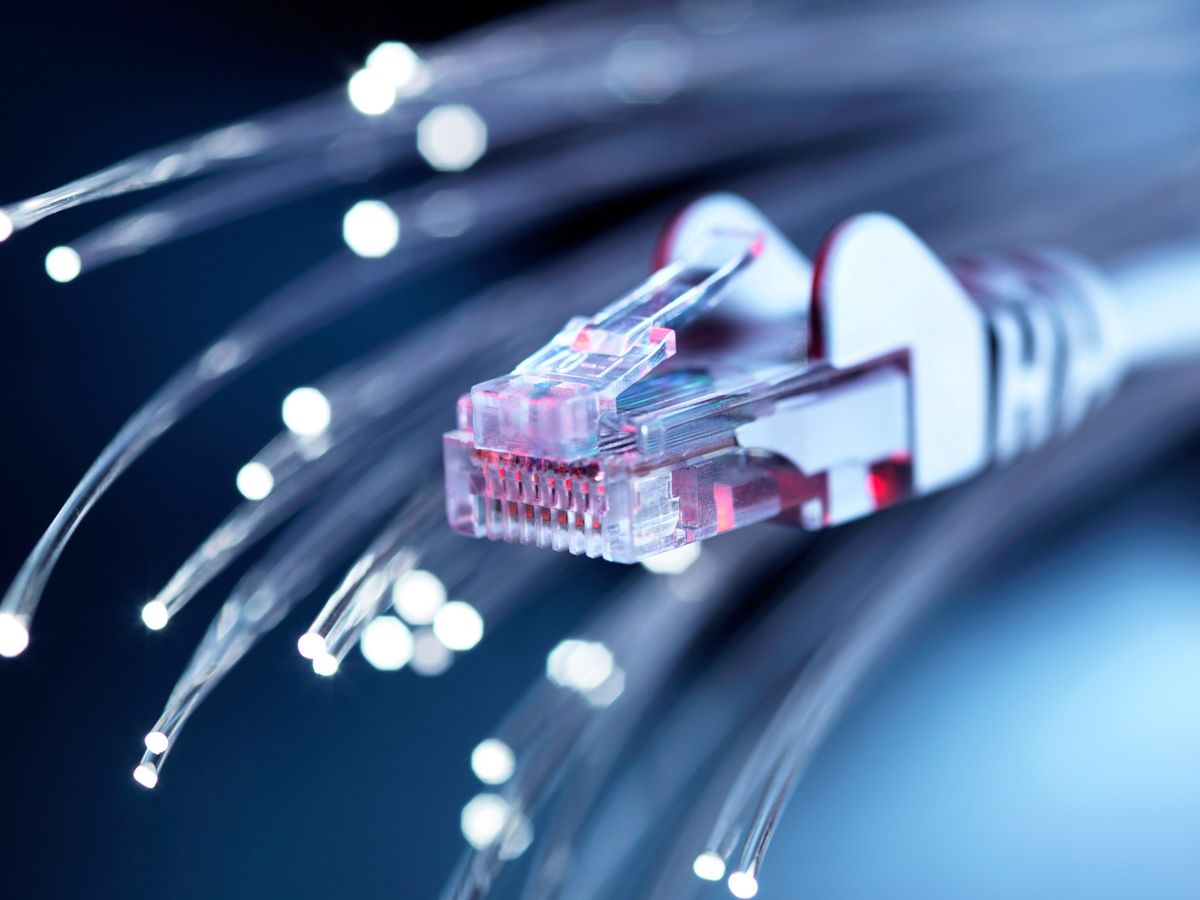The Xerox Palo Alto Research Center in California has spawned many pioneering computer technologies including the Alto—the first personal computer to use a graphical user interface—and the first laser printer.
The PARC facility also is known for the invention of Ethernet, a networking technology that allows high-speed data transmission over coaxial cables. Ethernet has become the standard wired local area network around the world, and it is widely used in businesses and homes. It was honored this year as an IEEE Milestone, a half century after it was born.
Connecting PARC’s Alto computers
Ethernet’s development began in 1973, when Charles P. Thacker—who was working on the design of the Alto computer—envisioned a network that would allow Altos to communicate with each other, as well as with laser printers and with PARC’s gateway to the ARPANET. PARC researcher Robert M. Metcalfe, an IEEE Fellow, took on the challenge of creating the technology. Metcalfe soon was joined by computer scientist David Boggs.
Metcalfe and Boggs had two criteria: The network had to be fast enough to support their laser printer, and it had to connect hundreds of computers within the same building.
The Ethernet design was inspired by the Additive Links On-line Hawaii Area network (ALOHAnet), a radio-based system at the University of Hawai’i. Computers transmitted packets, prefaced by the addresses of the recipients, over a shared channel as soon as they had information to send. If two messages collided, the computers that had sent them would wait a random interval and try again.
Metcalfe outlined his proposal, then called the Alto Aloha Network, in a now-famous memo to his colleagues. Using coaxial cables rather than radio waves would allow faster transmission of data and limit interference. The cables also meant that users could join or exit the network without having to shut off the entire system, Metcalfe said in a 2004 oral history conducted by the IEEE History Center.
“There was something called a cable television tap, which allows one to tap into a coax without cutting it,” Metcalfe said. “Therefore, [Boggs and I] chose coax as our means of communication. In [the] memo, I described the principles of operation—very distributed, no central control, a single piece of ‘ether.’”
Metcalfe and Boggs designed the first version of what is now known as Ethernet in 1973. It sent data at up to 2.94 megabits per second and was “fast enough to feed the laser printer and easy to send through the coax,” Metcalfe told the IEEE History Center.
A 9.5-millimeter thick and stiff coaxial cable was laid in the middle of a hall in the PARC building. The 500-meter cable had 100 transceiver nodes attached to it with N connectors, known as vampire taps. Each of the taps—small boxes with a hard shell—had two probes that “bit” through the cable’s outer insulation to contact its copper core. Thus new nodes could be added while existing connections were live.
Each vampire tap had a D-type connector socket in it, consisting of a plug with nine pins that matched to a socket with nine jacks. The sockets allowed Alto computers, printers, and file servers to attach to the network.
To enable the devices to communicate, Metcalfe and Boggs created the first high-speed network interface card (NIC)—a circuit board that is connected to a computer’s motherboard. It included what is now known as an Ethernet port.
The researchers changed the name from the original Alto Aloha Network to Ethernet to make it clearer that the system could support any computer. It reflected a comment Thacker had made early on, that “coaxial cable is nothing but captive ether,” PARC researcher Alan Kay recalled.
Metcalfe, Boggs, Thacker, and Butler W. Lampson were granted a U.S. patent in 1978 for their invention.
They continued to develop the technology and, in 1980, PARC released Ethernet that ran at 10 Mb/s. The update was done in collaboration with researchers at Intel and the Digital Equipment Corp. (DEC) to create a version of Ethernet for broad industry use, according to the Milestone entry.
Becoming an IEEE standard
Ethernet became commercially available in 1980 and quickly grew into the industry LAN standard. To provide computer companies with a framework for the technology, in June 1983 Ethernet was adopted as a standard by the IEEE 802 Local Area Network Standards Committee.
Currently, the IEEE 802 family consists of 67 published standards, with 49 projects under development. The committee works with standards agencies worldwide to publish certain IEEE 802 standards as international guidelines.
A plaque recognizing the technology will be displayed outside the PARC facility. It will read:
Ethernet wired LAN was invented at Xerox Palo Alto Research Center (PARC) in 1973, inspired by the ALOHAnet packet radio network and the ARPANET. In 1980 Xerox, DEC, and Intel published a specification for 10 Mbps Ethernet over coaxial cable that became the IEEE 802.3-1985 Standard. Later augmented for higher speeds, and twisted-pair, optical, and wireless media, Ethernet became ubiquitous in home, commercial, industrial, and academic settings worldwide.
Administered by the IEEE History Center and supported by donors, the Milestone program recognizes outstanding technical developments around the world.
The IEEE Santa Clara Valley Section sponsored the nomination. The dedication ceremony is scheduled for 18 May at the PARC facility.- The Pioneer Behind Electromagnetism ›
- 50 Years Later, We’re Still Living in the Xerox Alto’s World ›
- Xerox Parc’s Engineers on How They Invented the Future ›
- 35 Years Ago, Researchers Used Brain Waves to Control a Robot - IEEE Spectrum ›
- How Engineers at Digital Equipment Corp. Saved Ethernet - IEEE Spectrum ›
- 50 Years Later, This Apollo-Era Antenna Still Talks to Voyager 2 - IEEE Spectrum ›
Joanna Goodrich is the associate editor of The Institute, covering the work and accomplishments of IEEE members and IEEE and technology-related events. She has a master's degree in health communications from Rutgers University, in New Brunswick, N.J.


